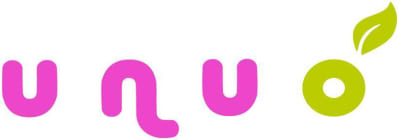Důvěřuje nám přes 100 000 zákazníků po celém světě

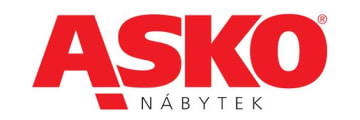


























Veškerá komunikace se zákazníky na jednom místě

Podpora na chatu
Díky chat boxu dokážete zázraky! Umožní vám navázat přímý a rychlý kontakt s návštěvníky, díky čemuž budete schopní poskytnout podporu více zákazníkům najednou. Nabízejte prémiovou péči a navyšte tak svůj konverzní poměr!
Webová a Facebooková integrace
Stejný chat na webu i na vaší facebookové stránce? Není problém! Nabídněte návštěvníkům více možností, kde vás mohou kontaktovat a navyšte tak své prodeje díky online konverzacím.
E-mailová integrace a oznámení
Aktivujte Smartsupp e-mailovou integraci a odpovídejte na veškeré dotazy zákazníků z jednoho místa. Díky e-mailovým oznámením vám neunikne ani jeden dotaz, i když jste offline.
Nastavitelný. Jednoduchý. Praktický.
Komunikujte se zákazníky rychle a jednoduše



Informace o návštěvnících a historie konverzací
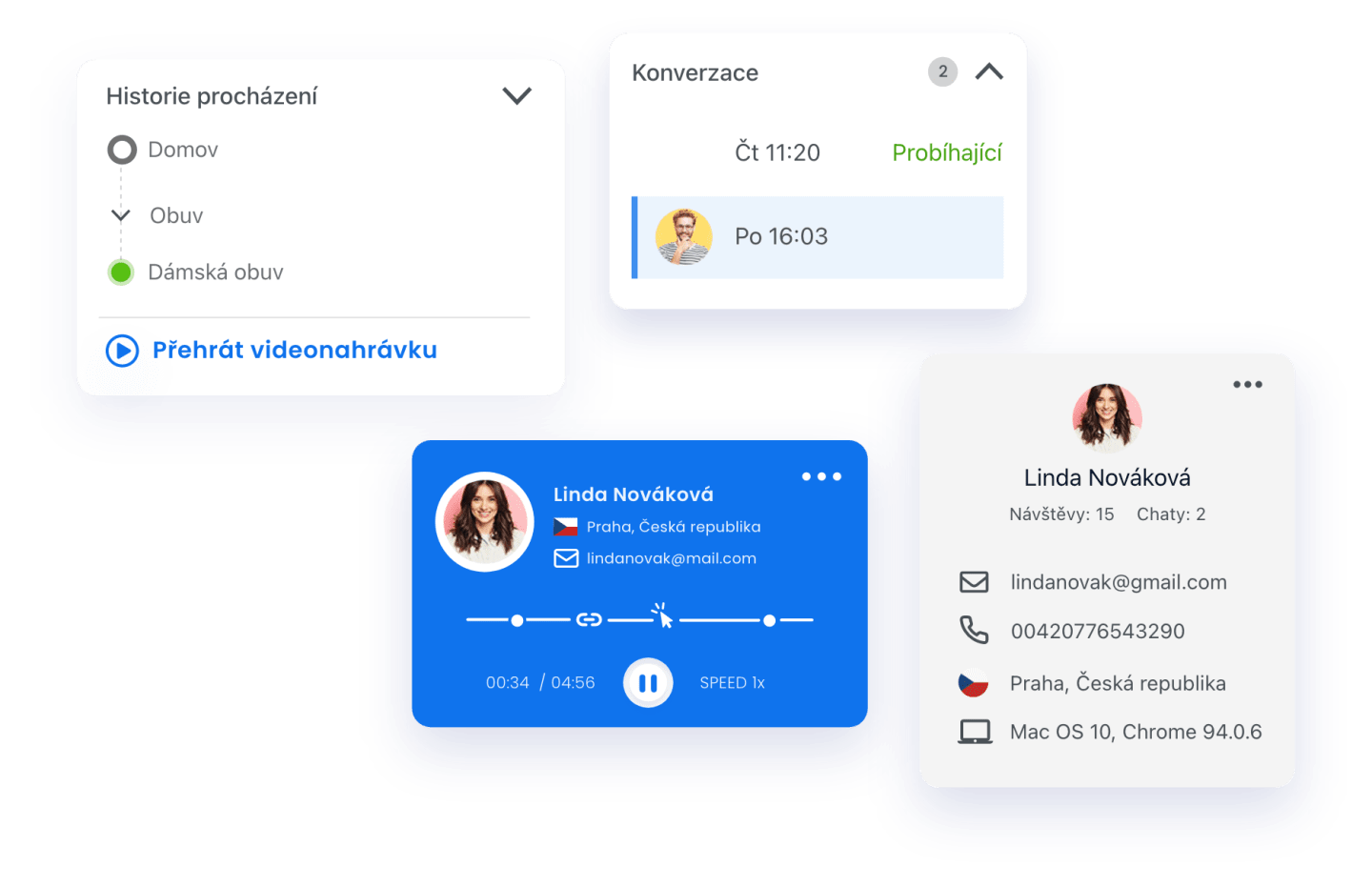
Statistiky a historie konverzací
Získejte přístup k základním nebo rozšířeným údajům o návštěvnících. Prohlédněte si historii konverzací, abyste mohli nabídnout ještě lepší podporu a zlepšit celkovou uživatelskou zkušenost.
Seznam návštěvníků
Mějte přehled o všech návštěvnících svých webových stránek. Získejte informace o tom, kolikrát váš web navštívili, z jakého zdroje přišli a další. Návštěvníky můžete dokonce přímo oslovit a nabídnout jim slevu nebo pomoc.
Video nahrávky
Díky nahrávkám můžete odhalit problematická místa svých webových stránek a nebo shlédnout, jak se na webu pohyboval zákazník, se kterým jste komunikovali. Optimalizujte váš web a zajistěte svým uživatelům hladký nákupní proces.
Znásobte efektivitu vaší zákaznické podpory

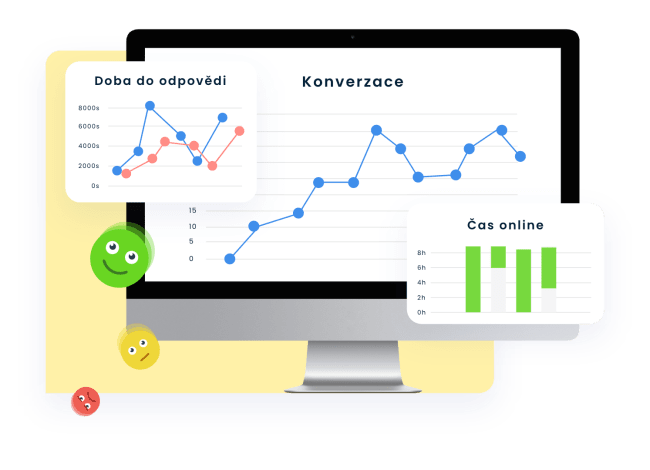
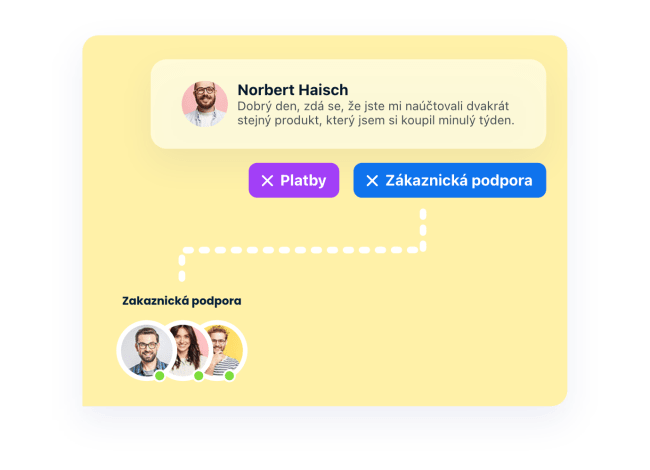
Promluvte si s naším odborníkem

Pracujte chytře a zvyšte své online prodeje
- Automatizace pomocí chatbotů
Používejte chatbota jako filtr opakujícíh se dotazů nebo pro přivítání návštěvníků na webu. Automatizujte odpovědi na často kladené dotazy a věnujte se návštěvníkům, kteří vás opravdu potřebují. Díky automatizaci ušetříte čas i peníze. - Zkratky
Neztrácejte čas neustálým psaím stejných frází. Urychlete a automatizujte vaše odpovědi na chatu. Z opakujících se odpovědí vytvořte zkratky a využívejte je v průběhu konverzace. Můžete vytvořit jak týmové, tak osobní zkratky a pokrýt tak potřeby všech operátorů.
Posilte své podnikání s naším konverzačním AI chatbotem!
Poznejte budoucnost konverzačního e-commerce z první ruky.

Důkazem jsou čísla – naši zákazníci důvěřují výsledkům
Jednoduché spuštění na jakémkoliv webu
S našimi pluginy pro nejpoužívanější e-commerce platformy rozjedete Smartsupp do dvou minut. A v ostatních případech do čtyř.
Vyzkoušet live chat










